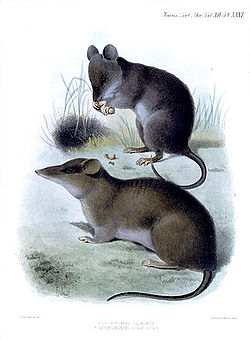| Mount Data shrew-rat | |
|---|---|
 | |
| The lower species shown is the Mt. Data Shrew Rat | |
| Scientific classification | |
| Kingdom: | Animalia |
| Phylum: | Chordata |
| Class: | Mammalia |
| Order: | Rodentia |
| Family: | Muridae |
| Genus: | Rhynchomys |
| Species: | R. soricoides |
| Binomial name | |
| Rhynchomys soricoides Thomas, 1895 | |
 | |
The Mount Data shrew-rat (Rhynchomys soricoides) is a species of rodent in the family Muridae. It is found only in the Philippines.
